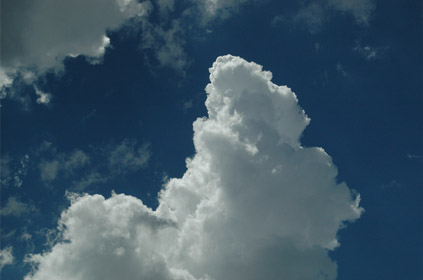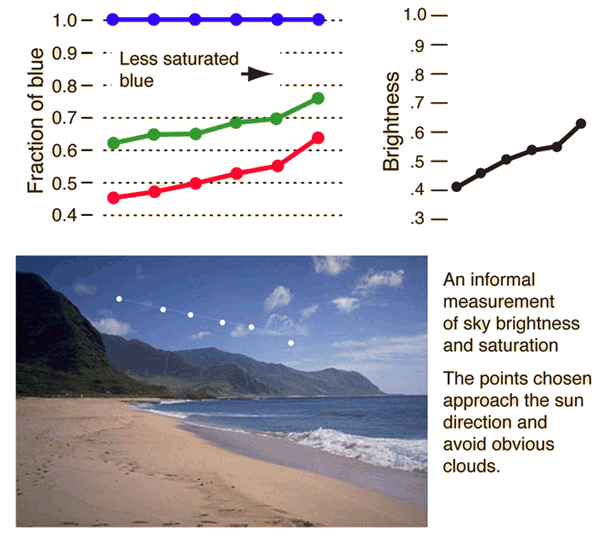Blue Sky
The blue color of the sky is caused by the scattering of sunlight off the molecules of the atmosphere. This scattering, called Rayleigh scattering, is more effective at short wavelengths (the blue end of the visible spectrum). Therefore the light scattered down to the earth at a large angle with respect to the direction of the sun's light is predominantly in the blue end of the spectrum.

 | Note that the blue of the sky is more saturated when you look further from the sun. The almost white scattering near the sun can be attributed to Mie scattering, which is not very wavelength dependent. |
| Measurement of the progression of saturation and brightness |
Clouds in contrast to the blue sky appear white to achromatic gray. |
 |
The water droplets that make up the cloud are much larger than the molecules of the air and the scattering from them is almost independent of wavelength in the visible range.

This is an outstanding image of the blue sky and its extent relative to the diameter of the Earth. It was taken from a U.S. Air Force U-2 craft at about 70,000 feet.
Scattering concepts
Atmospheric optics concepts
| HyperPhysics***** Light and Vision | R Nave |



